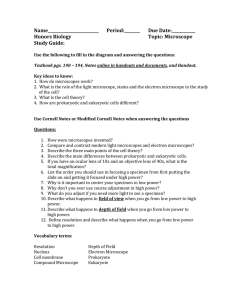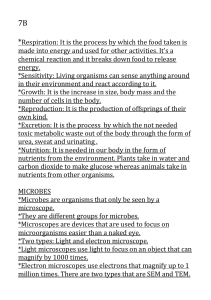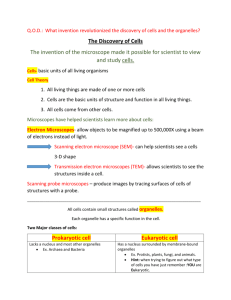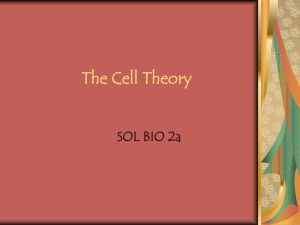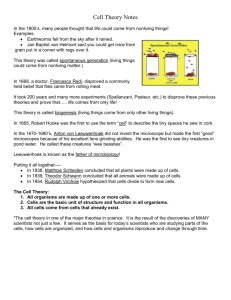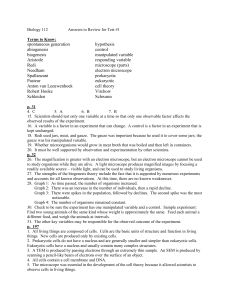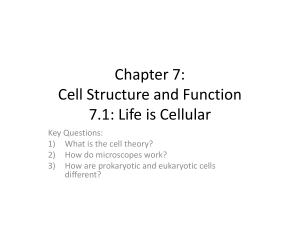Chapter#6.doc
advertisement
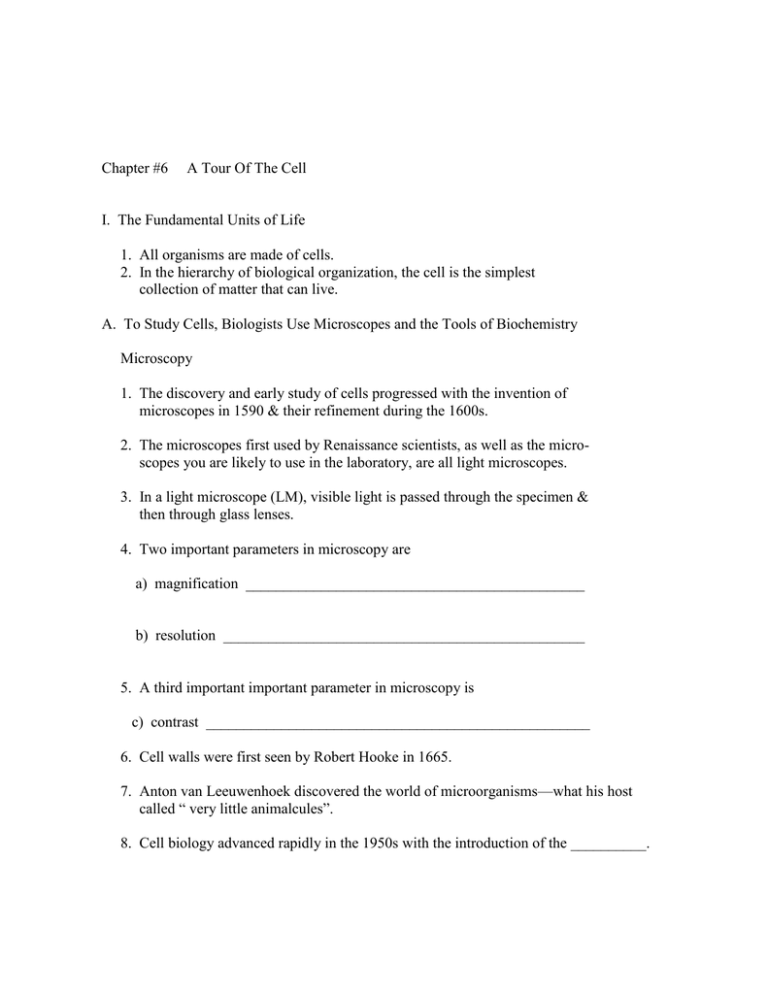
Chapter #6 A Tour Of The Cell I. The Fundamental Units of Life 1. All organisms are made of cells. 2. In the hierarchy of biological organization, the cell is the simplest collection of matter that can live. A. To Study Cells, Biologists Use Microscopes and the Tools of Biochemistry Microscopy 1. The discovery and early study of cells progressed with the invention of microscopes in 1590 & their refinement during the 1600s. 2. The microscopes first used by Renaissance scientists, as well as the microscopes you are likely to use in the laboratory, are all light microscopes. 3. In a light microscope (LM), visible light is passed through the specimen & then through glass lenses. 4. Two important parameters in microscopy are a) magnification _____________________________________________ b) resolution ________________________________________________ 5. A third important important parameter in microscopy is c) contrast ___________________________________________________ 6. Cell walls were first seen by Robert Hooke in 1665. 7. Anton van Leeuwenhoek discovered the world of microorganisms—what his host called “ very little animalcules”. 8. Cell biology advanced rapidly in the 1950s with the introduction of the __________. 9. The electron microscope revealed the cell’s ultrastructure. 10. Two types of electron microscopes are – the scanning electron microscope (SEM) & the transmission electron microscope (TEM). 11. The scanning electron microscope is especially useful _______________________ ___________________________________________________________________ 12. The transmission electron microscope is used to ____________________________ ___________________________________________________________________ B. Cell Fractionation 1. Cell fractionation is _____________________________________________________ II. Eukaryotic Cells Have Internal Membranes That Compartmentalize Their Functions 1. The basic structural & functional unit of every organisms is one of two types of cells -- ___________________ & _______________________. 2. Organisms of domains Bacteria & Archaea consist of _______________ cells. 3. Protists, fungi, animals and plants all consists of ___________________ cells. 4. All cells have several basic features in common. They are ______________, ______________________________________________________________ 5. The major differences between prokaryotic and eukaryotic cells is Prokaryotic Eukaryotic 1. 1. 2. 2. 3. 3. B. A Panoramic View of the Eukaryotic Cell
